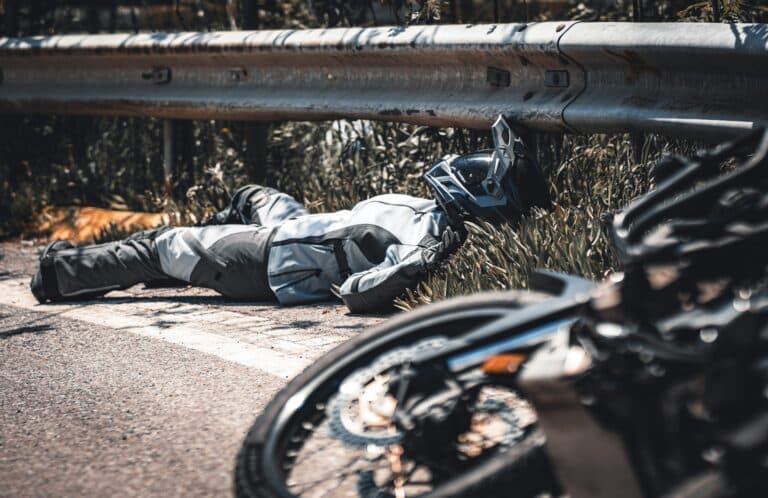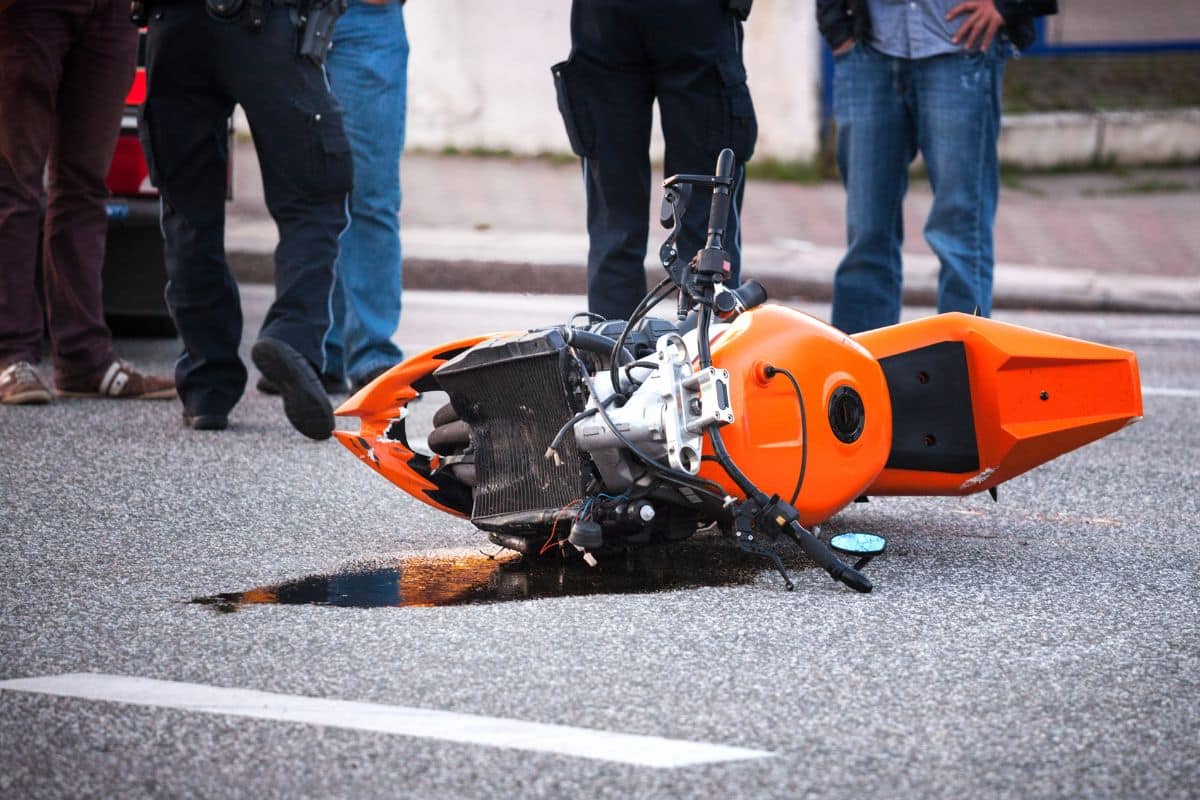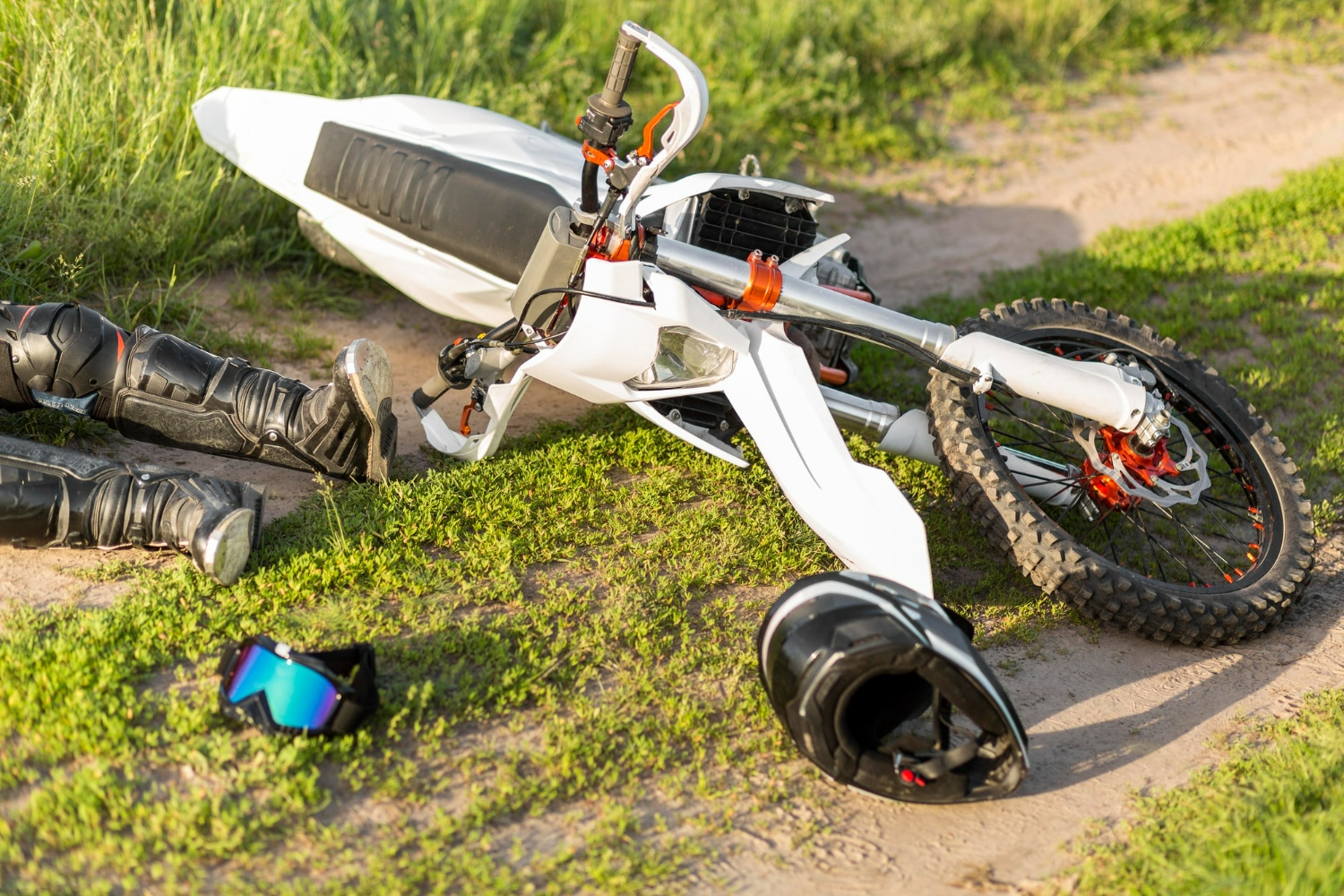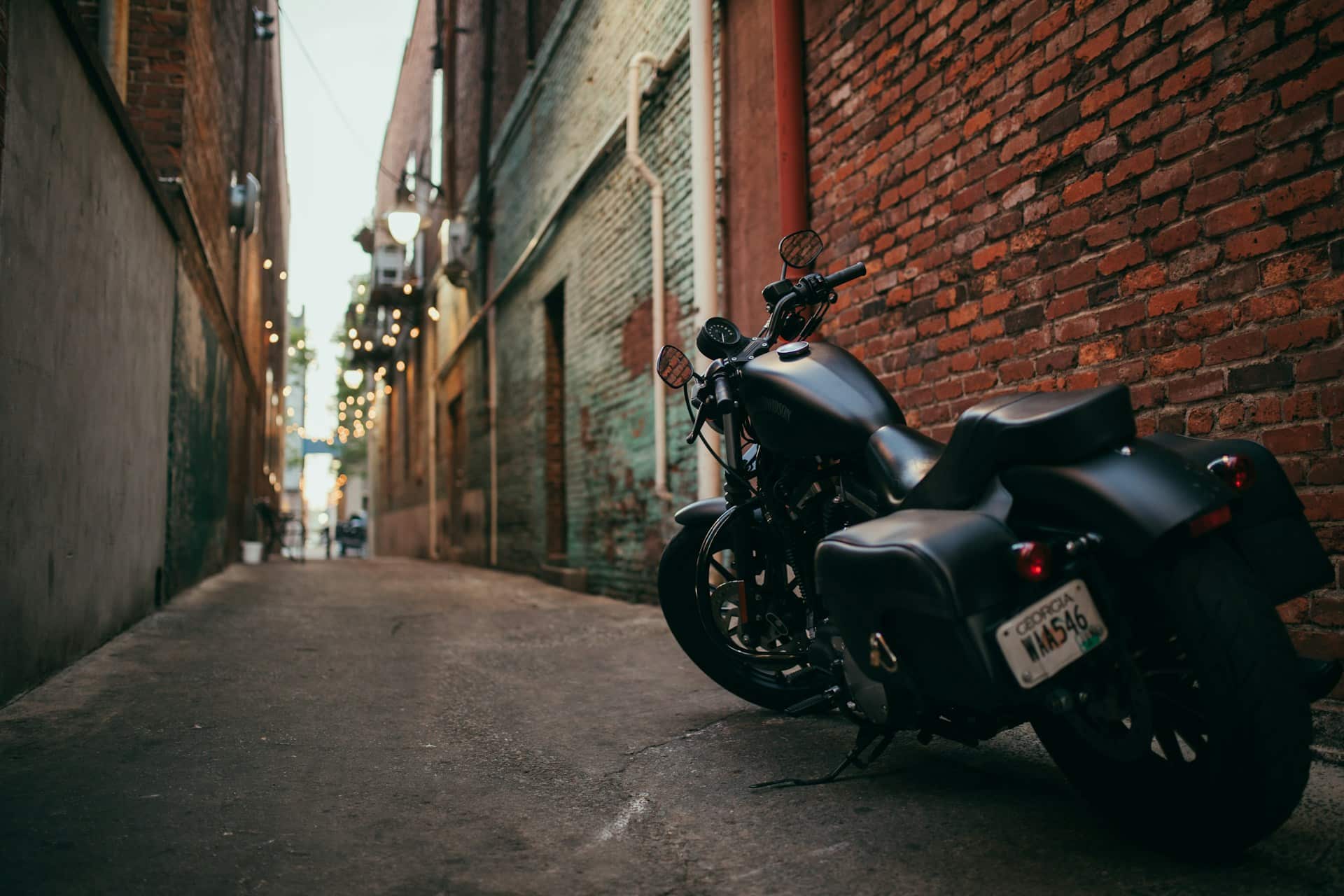Motorcycling is often seen as a thrilling way to experience the open road, offering a sense of freedom unmatched by other forms of transportation. However, it also comes with inherent risks that every rider should be aware of.
While some accidents are unavoidable, many crashes can be prevented with the right precautions. Understanding these risks and taking steps to mitigate them is crucial for any motorcyclist.
Motorcycle Accidents in the US
| Statistic | Value |
|---|---|
| Increase in motorcycle fatalities (2021 to 2022) | 19% |
| Total motorcyclist fatalities in 2022 | 5,932 |
| Motorcycles’ percentage of registered vehicles | 3% |
| Motorcycles’ percentage of traffic fatalities | 14% |
| Motorcyclists in fatal crashes who were speeding | 31% |
| Alcohol-impaired motorcyclists in single-vehicle fatalities (2022) | 41% |
| Likelihood of motorcyclists dying compared to car occupants | 28 times higher |
Wear Protective Gear at All Times
Wearing the right protective gear can mean the difference between life and death in the event of a motorcycle crash.
Protective gear serves as your first line of defense, reducing the severity of injuries when accidents occur.
It’s not just about wearing a helmet; every piece of gear you choose can significantly impact your safety on the road.
Importance of Helmets and DOT-Approved Options
A helmet is the most crucial piece of protective gear for any rider.
According to the National Highway Traffic Safety Administration (NHTSA), helmets reduce the risk of head injury by 69%. A DOT-approved helmet ensures that it meets the necessary safety standards, providing the best protection in a crash.
Whether you prefer a full-face helmet or an open-face one, make sure it fits snugly and is replaced every five years or after a significant impact.
Benefits of Wearing Reflective Clothing
Visibility is a major concern for motorcyclists, especially at night.
Reflective clothing can dramatically improve your visibility to other drivers, reducing the chances of being overlooked in their blind spots.
Jackets, vests, and even helmets with reflective strips help ensure that you are seen from all angles.
Consider this: a motorcyclist wearing reflective gear is 37% less likely to be involved in a nighttime crash compared to one who isn’t. Simple yet effective, reflective clothing is a small investment for a safer ride.
Choosing the Right Protective Pads and Armor
In addition to helmets, gloves, and boots, protective pads and armor are essential for protecting your body’s most vulnerable areas.
These include elbow pads, knee guards, and body armor that absorb impact and reduce injury severity.
When choosing these items, look for CE-rated armor, which meets European safety standards and provides robust protection.
Properly fitted armor can be the difference between a minor injury and a catastrophic one, giving you peace of mind on every ride.
Laws and Regulations Around Protective Gear
While the importance of wearing protective gear is clear, it’s also worth noting that laws and regulations vary by state. Some states require all motorcyclists to wear helmets, while others have more lenient rules.
Regardless of the law, prioritizing safety by wearing comprehensive protective gear is always the best choice.
In states with partial helmet laws, consider the benefits of wearing a helmet even if it’s not legally required. Protecting yourself shouldn’t be about compliance alone—it’s about staying alive.
Adhere to Traffic Laws and Speed Limits
Adhering to traffic laws and speed limits is not just a legal obligation—it’s a critical aspect of motorcycle safety.
Traffic laws are designed to protect everyone on the road, including motorcyclists, who are more vulnerable to injuries in the event of a crash.
By following these rules, you significantly reduce your chances of being involved in an accident.
Risks Associated with Speeding on a Motorcycle
Speeding is one of the leading causes of motorcycle accidents.
When you speed, you reduce your ability to react to unexpected obstacles or changes in traffic conditions.
For instance, if a car suddenly brakes in front of you, your stopping distance will be much longer at higher speeds, increasing the likelihood of a collision.
The National Highway Traffic Safety Administration (NHTSA) reports that in 2020, speeding was a factor in 33% of all fatal motorcycle crashes.
Speed limits are set based on road conditions and traffic patterns to ensure that drivers and riders alike can react appropriately to potential hazards.
Legal Implications of Violating Traffic Rules
Motorcyclists are subject to the same traffic laws as all other vehicles on the road.
Violating these rules can lead to serious legal consequences, including fines, points on your license, and even the suspension of your riding privileges.
For example, running a red light or failing to yield the right of way can result in hefty fines and add points to your driving record, which can increase your insurance premiums.
In some cases, repeated violations could lead to the revocation of your motorcycle license.
Additionally, if you’re involved in an accident while breaking the law, you may be held liable for damages, even if the other party was partially at fault.
Strategies for Safe Riding in Various Speed Zones
Riding safely requires adapting to the specific conditions of each speed zone. Here’s how to adjust your approach:
- For urban areas, keep speeds low, anticipate frequent stops, and be cautious at intersections.
- For suburban Roads, slow down on curves and watch for pedestrians or animals in residential areas.
- On rural roads, ride carefully on less maintained roads, and slow down in low visibility conditions.
- On highways, watch traffic flow but avoid speeding; maintain a safe following distance and stay aware of vehicles entering or exiting.
Adapting your strategy to each speed zone enhances your safety and helps prevent accidents.
Stay Visible to Other Motorists
Staying visible is one of the most critical aspects of motorcycle safety.
Motorcycles are much smaller than other vehicles on the road, which makes them harder to see, especially in low-light conditions or in heavy traffic.
Ensuring that other drivers can see you is essential for preventing accidents.
Techniques to Enhance Visibility on the Road
Enhancing your visibility while riding a motorcycle is essential for staying safe on the road.
Since motorcycles are smaller and less noticeable than cars, it’s vital to take steps that make you more visible to other drivers.
Here are some effective techniques to help ensure that you’re seen by others:
- Use Your Headlights
- Wear Bright or Reflective Gear
- Position Yourself Wisely
- Signal Your Intentions Clearly
- Use Reflective Tape or Decals
- Add LED Lights
- Avoid Riding Beside Large Vehicles
- Keep Your Bike Clean
- Make Eye Contact
- Use Your Horn When Necessary
By following these techniques, you can greatly enhance your visibility on the road, reducing the risk of accidents caused by other drivers not seeing you. Staying visible is a proactive way to protect yourself every time you ride.
Effective Use of Motorcycle Indicators
Your motorcycle’s indicators are a critical communication tool, letting other drivers know your intentions.
Use them consistently and well in advance of making a turn or changing lanes.
Many accidents occur because drivers fail to see a motorcycle’s turn signal or misunderstand its intentions.
Make sure your signals are bright and functioning correctly, and if possible, supplement them with hand signals to increase your visibility.
Don’t forget to cancel your signals after completing a turn—leaving them on can confuse other drivers and lead to dangerous situations.
Defensive Riding Techniques
Defensive riding is a mindset and approach that every motorcyclist should adopt to minimize the risk of accidents. Unlike driving a car, riding a motorcycle requires heightened awareness and anticipation of the actions of other drivers.
By assuming that other motorists might not see you and preparing for unexpected situations, you can avoid many potential hazards on the road.
Importance of Maintaining a Safe Following Distance
One of the fundamental principles of defensive riding is maintaining a safe following distance. This gives you ample time to react to sudden stops or changes in traffic.
The general rule of thumb is to keep at least a two-second gap between you and the vehicle in front of you. However, in adverse weather conditions or when following large vehicles, increasing this distance to three or four seconds is advisable.
A greater following distance allows you to see further down the road, giving you more time to react to any potential dangers.
How to Anticipate Other Drivers’ Actions
Anticipating the actions of other drivers is a crucial defensive riding skill. This involves constantly scanning the road ahead and being aware of what’s happening around you.
Look for signs that a driver might change lanes, such as their vehicle drifting within the lane, or subtle movements of the wheels.
Be especially cautious around intersections, as drivers making left turns often fail to see oncoming motorcycles.
A good strategy is to watch the wheels of other vehicles; if you see them starting to turn, be prepared to react quickly.
Also, keep an eye on the behavior of pedestrians and cyclists, as they can sometimes make unpredictable moves.
Effective Scanning of the Road Ahead
Scanning the road effectively means not only looking at the vehicles immediately in front of you but also taking in the broader picture.
You should be scanning for potential hazards such as potholes, debris, or sudden stops by vehicles several cars ahead. This broader view allows you to anticipate issues before they become immediate threats.
It’s also important to frequently check your mirrors to stay aware of what’s happening behind you.
By being aware of your surroundings at all times, you reduce the likelihood of being caught off guard.
This technique is especially useful in heavy traffic or on unfamiliar roads where hazards might be less predictable.
Handling Aggressive or Distracted Drivers
Encountering aggressive or distracted drivers is an unfortunate reality on the road. These drivers pose a significant risk to motorcyclists due to their unpredictable behavior.
If you find yourself near an aggressive driver, it’s best to create as much distance as possible.
Slow down or change lanes to let them pass.
For distracted drivers, who may be texting or not paying full attention, it’s crucial to avoid riding in their blind spots and to stay alert for any sudden movements.
Protect Yourself on the Road with Crockett Law Firm
Motorcycling offers a unique sense of freedom, but it also comes with significant risks.
If you find yourself in an accident despite taking every precaution, it’s crucial to have someone on your side who understands your situation.
Contact the Crockett Law Firm, your trusted Santa Ana motorcycle accident attorney, at (800) 900-9393 to discuss your case and ensure your rights are protected.










